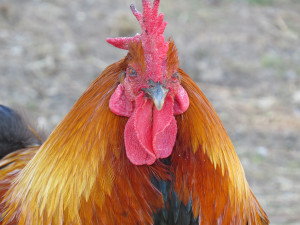A recent discussion in the LinkedIn group, Metrology & Test Measurement, on the “unbroken chain of calibration” has driven me to hone in on my personal understanding of measurement uncertainty. I am ashamed to say that I know virtually nothing (0 ±0.0031415929) about calibration despite having worked as an electronics technician in the ’90’s. My excuse is that ISO 9xxx only hit the repair floor in the ’90’s. (Well, that’s why it was called ISO 9000.) But the National Bureau of Standards (NBS), which predates the National Institute of Standards and Technology (N.I.S.T.) by 87 years, has been around since 1901.
And the NBS was predated by the International Bureau of Weight and Measures (BIPM in French). In any case, I’m not quite sure how to connect ISO 9xxx with calibration. It must come into it somewhere. All I remember was what kind of shoes to wear and grounding rules. I guess you could say that my uncertainty around these topics is not measurable or traceable!
How do we arrive at an unbroken chain when it comes to metrology? Let’s go to the start of the chain. We will use N.I.S.T. for discussion purposes but really it applies to any of the international organizations that set standards for metrology.
- We start with a reference point. This is a universally known measurement value of a particular measurable event. For example, the melting point of ice. (N.I.S.T uses a thermometer as an example on their website.)
- This reference is used as a standard by N.I.S.T. I assume that means that a correctly calibrated thermometer will measure – well, I’m not sure exactly what it will measure. It is close to 0 degrees Centigrade. There are various factors that can determine the temperature, such as atmospheric pressure and the purity of the actual water that the ice is composed of. The point is – a standard is set that will be used to begin the chain. This standard is the reference that all other measurements down the chain are going to be traced back to.
- Going down the chain, we compare the measurements of the next instrument to be checked against the N.I.S.T. measurement , then document the differences in the results. Depending on the conditions of the measurement, we can make the necessary adjustments needed to arrive at the most accurate measurement but can never be absolutely certain of a true value. Like much of life, we do our best. The “best” is a range of values that approximates the value of the N.I.S.T standard. This range of values is the range of uncertainty. You know that somewhere in this range, lies the true value and if you calibrate an instrument to show results within this range, you should be able to certify your instrument as calibrated according to the standard. If along the way, you lose the reference, your instrument cannot be considered to be calibrated according to the N.I.S.T. standard.
I know! This is a rather crude, simplistic explanation of the process. I “did my best”!
I got further confused after my visit to the supermarket today. They had fresh whole chickens on sale with a limit of 6 Kg per customer. For the customer’s convenience, a scale was placed near the chickens, allowing the customer to verify the total weight of his selection. The trick was to see whether you could get four chickens for 6 Kg, despite the average weight of 1.55 Kg per chicken. You do the math now. It seemed a shame to buy only three chickens and thus not take full advantage of this special sale. Four chickens were over 6 Kg and three were under by quite a bit.
Well, I came pretty close. I managed to find two smaller looking birds and my total weight on the scale (when last was it calibrated, I wonder?) was 6.14 Kg. I went over to the poultry supervisor and told him that I was a little over the maximum weight allowed, and with a smile on his face, he said, “That’s fine.”
<!–Here’s the moral of my little story–>: The more accurate our measurements are, the more honest we can be in our relationships with customers, clients, and other businesses. However, sometimes in life a little uncertainty goes a long way when it comes to give-and-take with others. <!–End of moralizing–>
Of interest:
- What is Traceability? (N.I.S.T)
- What is Traceability? (Mercury)
- Calibration Policies (National Research Council Canada)
- Traceability (Bureau International des Poids et Mesures)


